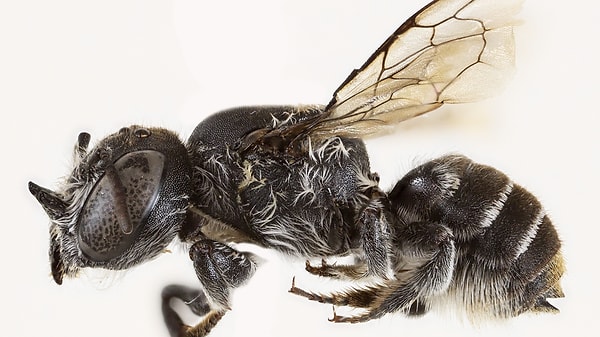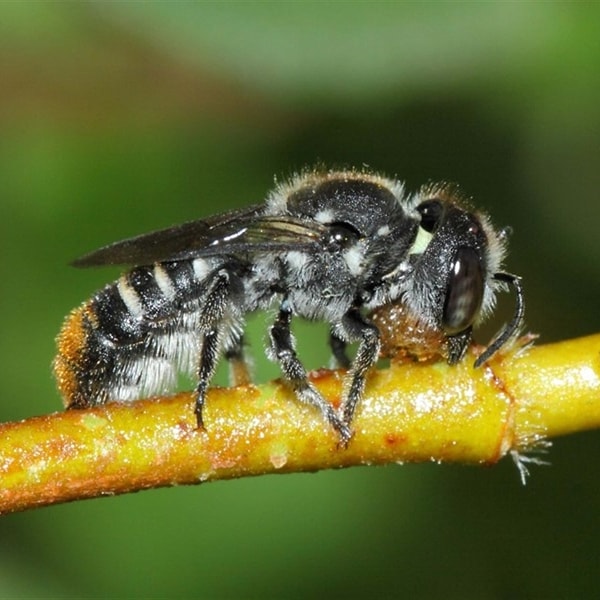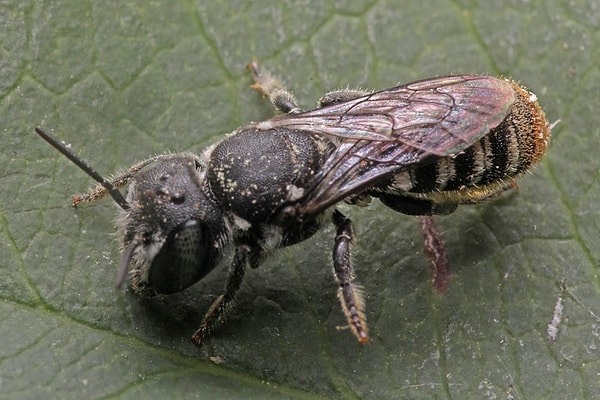New Bee Species Discovered in Western Australia: Named "Lucifer"
The discovery of a 'devil-horned' bee species in Western Australia has once again highlighted the surprises nature has in store for us and how little we truly know about native pollinators. This bee, which stands out with its small horn-like protrusions on its face, has been introduced to the scientific world under the name Megachile (Hackeriapis) lucifer, shedding light on the biological diversity of the Goldfields region.
The new bee species was discovered during field studies on the rare wildflower Marianthus aquilonarius, which is critically endangered and only grows in Western Australia's Goldfields region. This plant is only found in the Bremer Range area, located between the towns of Norseman and Hyden.
They named the bee 'Lucifer'.

Associate Professor Kit Prendergast from Curtin University explains that the unusual small horns on the face of the female bee played a significant role in naming the species. Lucifer, while meaning 'light-bringer' in Latin, is also known for its demonic connotations and its association with a popular Netflix series.
Prendergast recounts noticing a horned bee while studying a rare flower and realizing that this was not an ordinary species. DNA analyses confirmed that both female and male specimens belonged to the same species; their genetic profiles, however, did not match any bee species in the databases. Morphological examinations also corroborated the existence of this new species.
Scientists emphasize that this species is the first new discovery in this group of bees in the last 20 years, underscoring that there are still many creatures in regions like Goldfields waiting to be discovered.
They might be sensitive to climate changes.

Prendergast underscores the significance of the discovery as a crucial warning for native bees and their habitats. The newly discovered species, found in the same narrow area as an endangered wildflower, is thought to be susceptible to threats such as habitat destruction and climate change.
Attention is drawn to the fact that mining companies don't sufficiently focus on native bees in their environmental impact studies. This oversight leads to overlooked bee species that are yet to be identified by science and are dependent on specific plants.
Prendergast's warning is clear: 'If we remain ignorant about which native bees exist and which plants they require, we risk unwittingly losing both the bees and the plants they depend on.'
Its size may be small, but its story is monumental...

Despite its small size, the Megachile lucifer delivers a significant message about nature conservation and biodiversity. It serves as a reminder that the Goldfields region is still under-explored and that pollinator protection should not be limited to honey bees alone.
Scientists believe that this 'devil-horned' bee serves as a potent warning about the importance of native bee species and the necessity to safeguard delicate habitats under pressure from mining and climate stress.
Would you like to listen to this news with an artificial intelligence commentary?
Keşfet ile ziyaret ettiğin tüm kategorileri tek akışta gör!

Send Comment